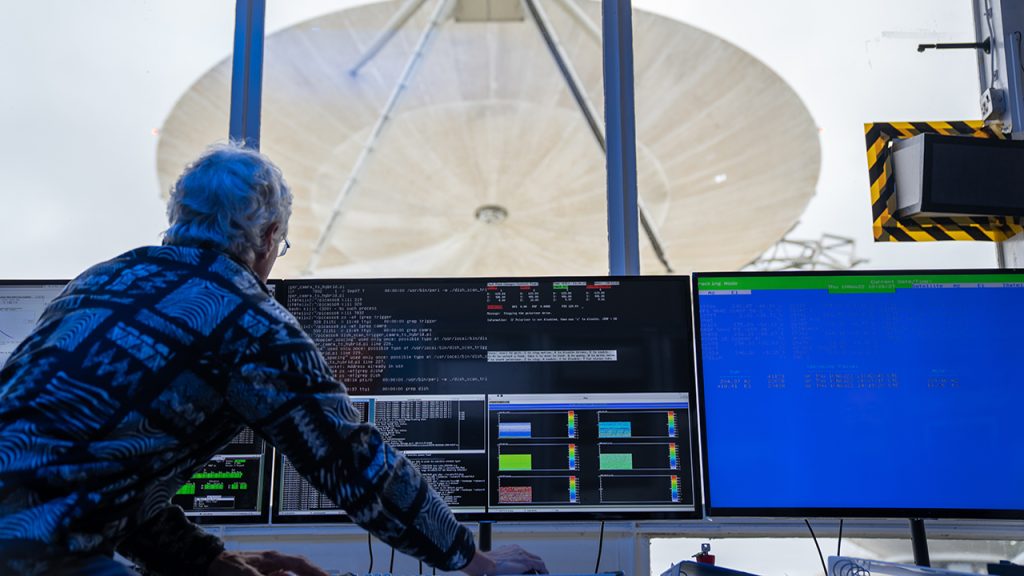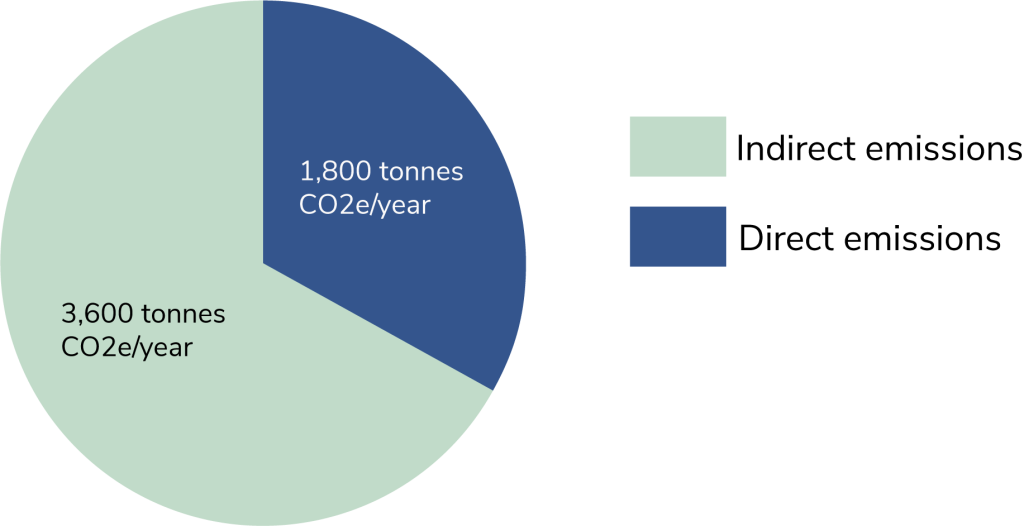
National Centre for Atmospheric Science carbon footprint
As responsible research innovators at the National Centre for Atmospheric Science, we need to fulfil our role while recognising the environmental impacts of our scientific activities, and seek to minimise these impacts as soon as we can.
We have been working to understand the impacts we create, and where we have opportunities to influence sustainable practices. We have gained – for the first time – insights into our carbon footprint.
In partnership with sustainability consultants at 3ADAPT and colleagues at the institutions that host our facilities and employ our staff, we are now able to share an overview of our carbon emissions.
It is important that we work together and with partners to achieve environmental sustainability across our range of activities, while still delivering world-class research and scientific services. We need to reduce our carbon emissions and take quick action where we can. To enhance our environmental performance we will need to re-examine our ways of working, phase out avoidable emissions, and ensure we use clean power to supply our operations.
Stephen Mobbs, Executive Director, National Centre for Atmospheric Science
Our carbon footprint
In this section you will find a first look at our carbon footprint information.
The National Centre for Atmospheric Science (NCAS) has over 200 research scientists, data analysts, technologists, managers and support staff embedded at 12 universities and research institutes across the UK. The staff roles, facilities and services across these sites vary significantly.
Most of our sites are offices for staff, while others host supercomputers, laboratories, observatories, and a research aircraft that flies globally. The majority of our sites are spread across the UK, but we also have two international monitoring stations.
The NCAS carbon footprint, and the opportunities to change it, are significantly influenced by our organisations’ structure, operation, and availability of emissions data.
We have categorised our carbon footprint into three areas: direct emissions, which are from the combustion of fuels at our sites and organisation-wide vehicle use; indirect emissions from purchased energy supplies; and indirect emissions from activities like business travel, waste management, water, things we buy to carry out or support research, home-working, staff commuting, and leased assets.
Direct and indirect emissions from all greenhouse gases were included where practicably possible in our assessment, and have been typically reported as carbon dioxide equivalents – referred to as CO2e.
In some cases, there was a lack of available data – and so our 2019 carbon footprint includes some incomplete or proxy information. Future annual carbon assessments will look to improve data collection.
Using data collected for 2019, the current estimate for the NCAS baseline carbon footprint is 5,400 tonnes CO2e a year.
Direct and indirect emissions combustion of fuels and purchased energy
Our assessment tells us that NCAS creates 1,800 tonnes CO2e/year as direct emissions.
1,650 tonnes CO2e/year is from aviation fuel for our research aircraft and fuel for a small fleet of vehicles. Energy consumption at sites contributed 100 tonnes CO2e/year of our direct emissions, and 50 tonnes CO2e/year from refrigerant leakage. Where we have greater control or influence over energy use at sites, those emissions were recorded as direct.
But, the majority of our energy consumption emissions are indirect, as we have extremely limited operational control over energy demand and supply at most of our sites. We have included these emissions as leased assets.
Indirect emissions from activities such as business travel and purchases
Data collection and analysis shows that NCAS creates 3,600 tonnes CO2e/year as indirect emissions.
Business travel (1,300 tonnes CO2e/year) and purchases (1,450 tonnes CO2e/year) have the highest contribution to our indirect emissions. The carbon footprint from our leased assets, mostly energy consumption at our sites, and utilities total 400 tonnes CO2e/year and 500 tonnes CO2e/year respectively.

Next steps
What does our first carbon footprint assessment baseline carbon footprint recommend we do now?
- Devise a centralised energy reporting system for all fuels across all sites, to identify trends and monitor the energy efficiency efforts.
- Report accurate mileage, fuel consumption, and vehicle type across our fleet each year.
- Implement a waste data collection process, which includes tonnage and method of disposal.
- Bring in a water use data collection process.
- Create a central reporting system for business travel across all of our sites, which includes travel mode, distance, and reason.
- Identify and align the ways we procure products and services, and quantify emissions from supply chains and tender specifications.
Sophie Clay, NCAS’ Environmental Sustainability Manager explains how the interim carbon baseline assessment will be used: “Our carbon footprint assessment provides insights, but is by no means a complete picture.”
Sophie adds: “As we collect more and better quality data, we will be able to create a clearer inventory of our impacts. But, this doesn’t stop us in the meantime making a decarbonisation strategy and setting out some ambitious actions for reducing our current carbon emissions. I’m looking forward to working with the Natural Environment Research Council, UK Research and Innovation, our host institutions and collaborators to set targets over the coming months and years.”
By understanding our own impact on the environment and acting upon it, we will ensure our research and innovation plays a responsible role in addressing environmental issues such as climate change, hazardous weather and air pollution.
We will support our staff so they have the guidance and tools they need to make informed decisions about environmental sustainability, and we will recognise their efforts within the workplace. To drive positive environmental change, we will extend support to our wider community and share the steps we are taking to do our science in more sustainable ways.
The Natural Environment Research Council played a leadership role in the development of the UK Research and Innovation Environmental Sustainability Strategy, published in June 2020. The strategy includes a UK Research and Innovation wide target to reach net zero operational carbon emissions by 2040. This target is science informed and recognises we all have a role to play in addressing the global climate change challenge. Only through working with Natural Environment Research Council funded partners can we collectively find new ways to deliver world leading research in new low carbon ways. It’s a challenge but also an opportunity to transform how we deliver research through innovation.
Candice Snelling, Sustainability Lead, Natural Environment Research Council, UK Research and Innovation.
We look forward to sharing our progress, and are committed to communicating about the actions we take. Have a question? Please contact Sophie Clay, NCAS’ Environmental Sustainability Manager.
